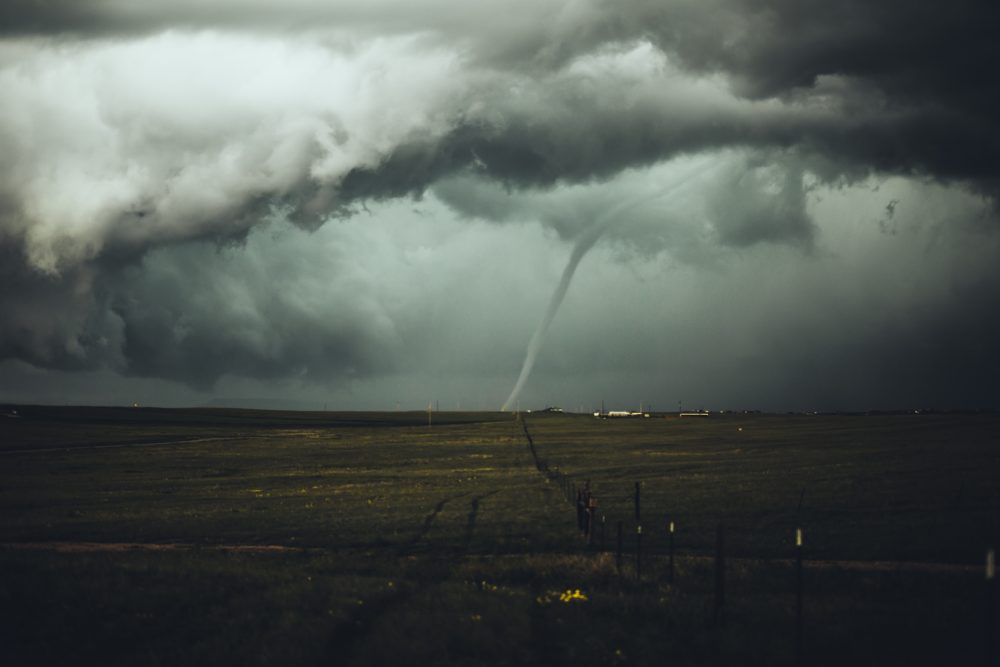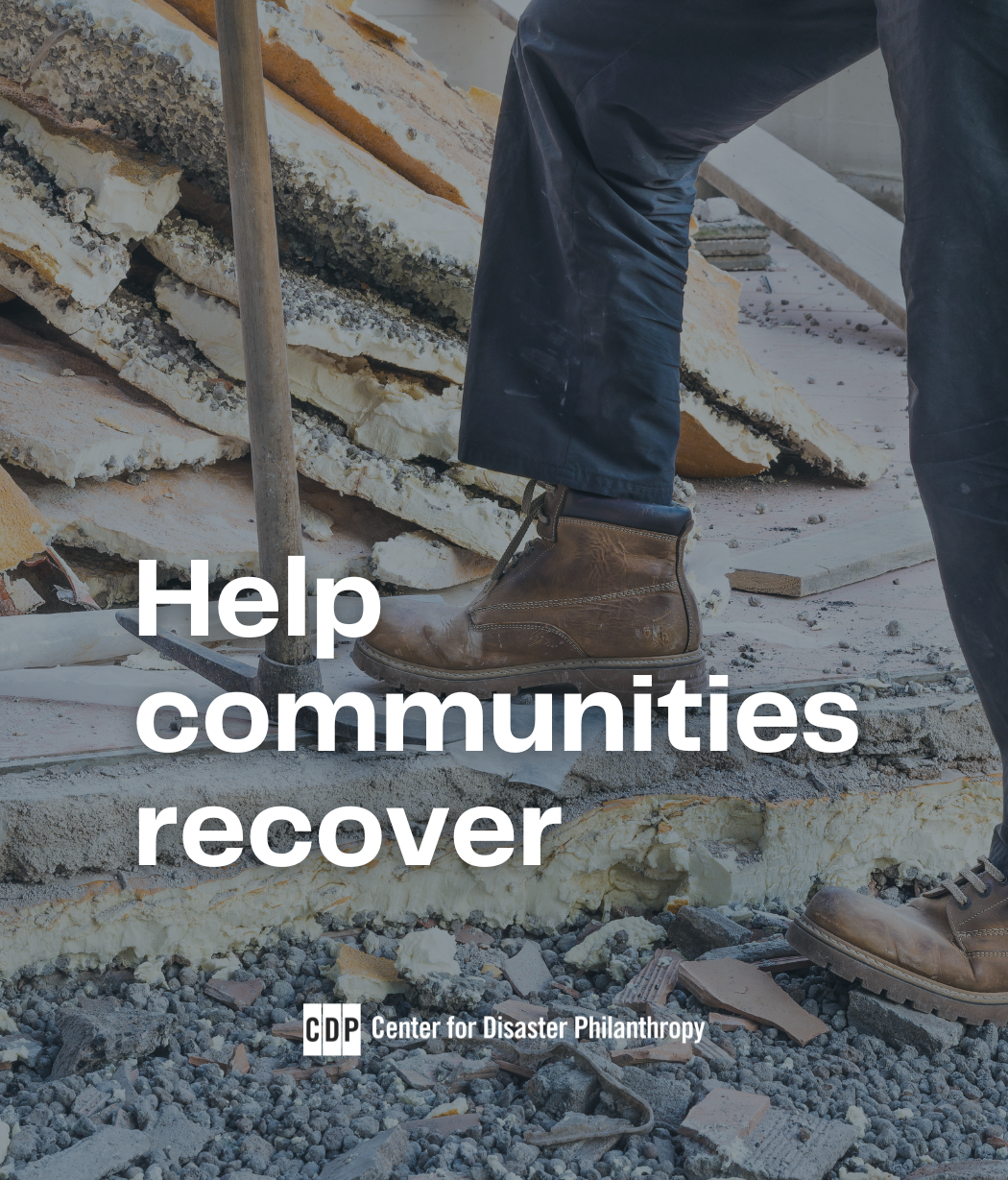What we’re watching: Weekly disaster update, June 10

We know all too well that disaster can strike anytime, anywhere in the world. Some disasters make headlines; others do not. Here at the Center for Disaster Philanthropy (CDP), we monitor the status of disasters worldwide and compile a list of the ones we’re tracking weekly, along with relevant disaster-related media coverage.
Here’s what we’re watching for the week of June 10, 2024.
New or Emerging Disasters
Severe storms and tornadoes – U.S. South: Over the weekend of May 25-26, severe weather and tornadoes hit several central and southern U.S. states. At least 23 people, including five children, were killed in Texas, Oklahoma, Arkansas, Kentucky and Alabama.
The storms damaged homes, flipped over semitrucks and left hundreds of thousands of people without electricity. Multiple tornadoes were reported across Western Kentucky, 80 people were injured at a truck stop along Interstate 35 in Valley View, Texas and heavy damage was observed in northwest Arkansas.
Five rare tornado emergencies were issued by the National Weather Service (NWS) over that weekend. Such warnings are only issued when a tornado threatens catastrophic damage and loss of life. Only a handful of tornado emergencies happen in many years.
A study published in April found that the country’s “Tornado Alley” has shifted. Geographically, tornadoes are occurring more in the Deep South and tornadoes have trended away from summer toward the fall and winter.
For more, see our 2024 US Severe Weather disaster profile.
Tornadoes – U.S. Central and East: The month of May saw more than 500 tornadoes reported across the country, the most of any month in at least five years, uprooting homes and disrupting lives in cities small and large. Unfortunately, the beginning of June seems to be continuing at this relentless pace.
NWS confirmed seven tornadoes on the evening of June 5, including five in Maryland. All these tornadoes were given a rating of either EF-1 or EF-0, the lowest rating on the Enhanced Fujita Scale, which is used to measure tornadoes. Although damage was minor, trees were uprooted and some housing damage occurred, including to mobile homes in Baltimore County.
Also on June 5, the NWS confirmed five tornadoes in central Ohio that resulted in minor damage. Following these storms, Ohio’s total tornado count for 2024 reached 62, tying the record of 62 set in 1992.
For more, see our 2024 US Tornadoes disaster profile.
Tornadoes Issue Insight
This issue insight provides information about tornadoes, the needs that may arise, recommendations for philanthropy and educational resources.
 Photo by Nikolas Noonan on Unsplash
Photo by Nikolas Noonan on Unsplash Cyclone – Bangladesh and India: The evening of May 26, Cyclone Remal passed through the Bangladeshi port of Mongla and the Sagar Islands of West Bengal, India, weakening the following day. The cyclone brought strong winds of over 68 miles per hour (110 kilometers per hour), torrential rain and tidal surges that flooded low-lying areas. At least 16 people were killed in both countries.
Save the Children said more than 270,000 children in Bangladesh lost their homes or are living in damaged houses. A preliminary rapid gender analysis produced by the Gender in Humanitarian Action working group in Bangladesh found that access to reproductive and antenatal care is difficult and there is a heightened risk of gender-based violence in affected areas. Additionally, the analysis revealed that 93.2% of livelihood activities have been disrupted, often resulting in the selling of women’s assets.
In Bangladesh, at least 800,000 people evacuated their coastal homes to take refuge in cyclone shelters according to officials. Bangladesh is well known for its investments in disaster preparedness which has reduced the impact of disasters in recent decades.
Landslide – Papua New Guinea: A landslide occurred on May 24 at 3:00 a.m. local time in the village of Yambali in Enga Province. The landslide blocked the main highway road making the whole village inaccessible. Adding to the challenge of response and recovery is the village’s remote location, a lack of telecommunications and tribal warfare throughout the province. Several hundred, and possibly many more, are feared dead.
Writing on his blog, Dave Petley from Hull University said, “On first inspection, this is a large rock slope failure that has transitioned into a rock and debris avalanche. There has been no indications that there was a trigger event, such as intense rainfall or an earthquake.”
A team from the International Organization for Migration in coordination with the National Disaster Centre implemented a rapid assessment and found that, in the two communities assessed, a total of 7,849 individuals were affected by the disaster. Immediate needs identified in this assessment include food, emergency shelter, safe drinking water, medical supplies, mental health and psychosocial support, and logistical support.
Floods – Sri Lanka: Heavy rains resulted in flooding and landslides in many parts of Sri Lanka last week. The disaster damaged more than 12,000 homes, flooded fields and roads, and forced authorities to cut electricity as a precaution. Officials said at least 16 people had died. Most reported deaths were near the capital, Colombo, and the remote Rathnapura, Matara and Galle districts.
Floods – Germany: Heavy rain the week of June 3 led to rivers bursting their banks in Bavaria and Baden-Württemberg. Water levels in the city of Passau, where three rivers meet, rose close to 32 feet (10 meters), the highest for more than a decade. In some parts of that region, experts spoke of once-in-a-century levels of rainfall.
German Chancellor Olaf Scholz said that the flooding is a reminder that “halting man-made climate change” cannot be neglected. The death toll had risen to six in southern Germany as of June 5. River levels on the Danube have also been rising in Austria and Hungary.
Previous/Ongoing Disasters
Heat Wave – India: In April and May, India faced several severe and prolonged heat waves, challenging resilience and disaster preparedness. Experts say the extreme heat is a result of the naturally occurring El Nino and the rapidly increasing concentration of greenhouse gases in the atmosphere. Rapid urbanization has worsened warming in urban areas, with outdoor workers and low-income families particularly impacted.
In Odisha alone, 159 suspected deaths have been reported this summer according to the state emergency operation center. On June 10, the state center reported eight deaths in the previous three days alone. The India Meteorological Department said on June 10 that the northwest and east will see temperatures increase by two to three degrees over the next five days.
Heat Wave – U.S. Southwest: A high-pressure front over Mexico is fueling a current heat wave across the southwest United States. Temperatures hit triple digits in many cities including Las Vegas, which saw 111 degrees Fahrenheit on June 6. While there have not been reports of heat-related deaths in Nevada’s Clark County, the Fire Department reported that it logged 20 calls classified as heat exposure over a three-day period, with 12 of those resulting in trips to local hospitals. Although an easing of high temperatures is being observed, forecasters are still urging people to be cautious as there will be little relief from the warm weather for the foreseeable future.
In addition to the disasters listed above, we actively monitor the following disasters or humanitarian emergencies. For more information, see the relevant disaster profiles, which are updated regularly.
- Afghanistan Humanitarian Crisis
- 2024 Atlantic Hurricane Season
- 2024 East Africa Flooding and Cyclones
- Gaza-Israeli Humanitarian Crisis
- Haiti Humanitarian Crisis
- Horn of Africa Hunger Crisis
- 2024 North American Wildfires
- 2024 Rio Grande do Sul Brazil Floods
- Sudan Humanitarian Crisis
Complex Humanitarian Emergencies – The Sahel Regional Crisis
Many places worldwide are experiencing emergencies caused by conflict, climate change, drought, famine, economic challenges and other conditions that combine to create a complex humanitarian emergency (CHE). CDP maintains complete profiles on several CHEs, and what CDP considers Level 1 CHEs are profiled in this weekly blog post and tracked.
The Sahel is affected by interconnected crises, marked by persistent political and social instability, a deteriorating security situation, and the relentlessness of climate change. The 2024 Sahel Humanitarian Needs and Requirements Overview (HNRO) identifies 32.8 million people in need across the region.
Intercommunal clashes, herder-farmer conflicts and tensions around resources combined with clashes between authorities and armed groups leave civilians in vulnerable situations. In Burkina Faso, Niger and Mali, power has been changing hands away from democratic election processes contributing to the instability.
Millions every year are affected by the worsening impacts of flooding, drought and high temperatures, including agricultural land degradation, livelihood disruption, and forced displacement.
Extreme heat in late March and early April resulted in a surge in excess deaths. For example, in Bamako, the capital of Mali, the Gabriel-Toure Hospital reported 102 deaths over the first four days of April. Scientists found that these heat waves “would have been impossible if humans had not warmed the planet by burning fossil fuels like oil, coal and gas, and with other activities like deforestation.”
The humanitarian situation in the Sahel has been described as a “neglected crisis” by the UN’s refugee agency. This is echoed by other sources including the Norwegian Refugee Council’s 2023 list of the world’s most neglected crises which reserves four out of the top five spots for countries in the Sahel – Burkina Faso, Cameroon, Mali and Niger.
Opportunities for philanthropy include supporting local organizations that are well positioned to reach populations larger organizations may struggle to access, strengthening resilience and reducing underlying vulnerabilities, and supporting livelihoods so people can provide for themselves and their families.
Join us this Thursday, June 13
Webinar: Insurance versus Mother Nature: How does losing insurance options affect disaster philanthropy?
What We’re Reading
- America’s Fingers-Crossed Strategy for Hurricane Season – The Atlantic: According to forecasts from various sources, the hurricane season that officially began on June 1, could be the direst in recorded history. “Our ability to muddle along as a society may be shrinking as the costs of climate-related disasters mount—and as our awareness grows of the sheer variety of weird and destructive weather that Americans face.”
- La Niña on the Way: What it Means for Hurricane Season – Eye on the Tropics: Michael Lowry, hurricane specialist and storm surge expert, describes why the forecasts for an impending La Niña “combined with chart-topping waters across the tropical Atlantic are giving everyone some pause this hurricane season.”
- As Atlantic hurricane season begins, Florida community foundations prepare permanent disaster funds – The Associated Press: With more named storms and major hurricanes predicted in 2024 than the average, foundations need new strategies to prepare, said CDP’s President and CEO Patty McIlreavy.
- Phoenix Is Facing a Hurricane Katrina of Heat. It’s Not Alone. – Bloomberg: “A Heat Katrina may already be happening, just in slow motion. In Arizona’s Maricopa County, home to the capital of Phoenix, nearly 2,000 people have died of heat-related deaths in the past five years.”
- Three months after the Texas’ largest wildfire, Panhandle residents are preparing for the next one – The Texas Tribune: Residents in the rural region continue to rebuild their lives after several fires burned more than 1 million acres in late February and early March. The preventive measures of some residents are in lieu of action by the state government.
- A War on the Nile Pushes Sudan Toward the Abyss – The New York Times: “The United Nations has yet to officially declare a famine in Sudan, but few experts doubt that one is already underway in parts of Darfur and, shockingly, Khartoum, one of the largest capitals in Africa.”
New research has found that African elephants call each other and respond to individual names, something few wild animals do.
Did you miss recent CDP blog posts?

Thin spaces: Recognizing humanity



